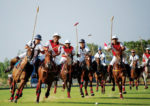Advertise Follow Us
Articles by Steve Kraus
50 Years of Farriery Progress
The Evolution of Horseshoes & Tools in 1 Farrier’s Career
Hoof-care professionals propel the industry forward with innovation
Read More
50 Years of American Farriers Journal
Reflections on Hoof-Care Milestones Over 5 Decades: Steve Kraus
Read MoreHow Do You Choose the Appropriate Horseshoe?
Work, intensity, duration, terrain and horse are the five considerations farriers should consider when selecting footgear for a horse
Read More
How the Horse Shaped Horseshoes
From transportation to the show ring, the changing role of the horse and industry influenced the production of horseshoes
Read More
Price Strategies for New and Reset Horseshoes
Analyze your business and clientele to choose the best practice
Read More
Chalklines Help Determine Trim
See how the golden ratio helps farrier Steve Kraus of Cornell University teach students how to develop their eye for trimming
Read More
Keeping Polo Athletes Competing
The dos and don’ts of trimming and shoeing these hard working horses
Read More
Is The Saddle The Problem?
Understanding general principles can help farriers confirm or eliminate causes of lameness
Read More















